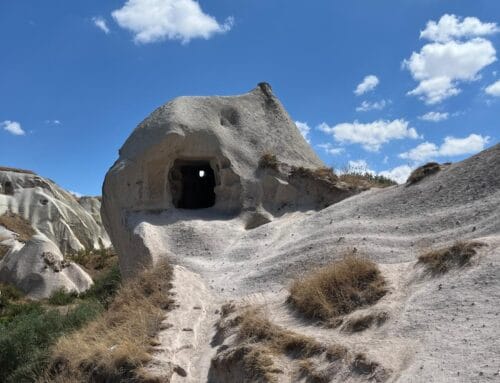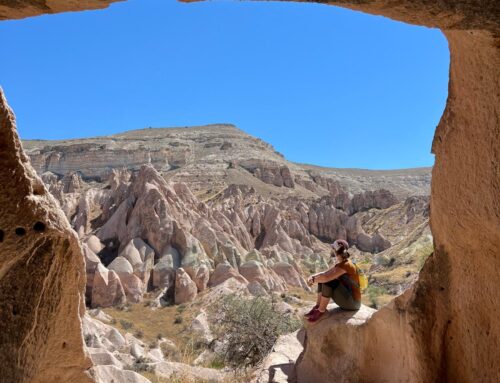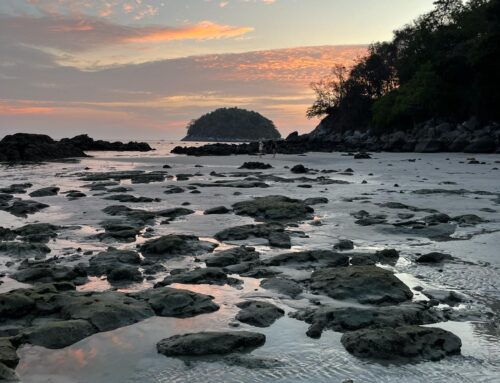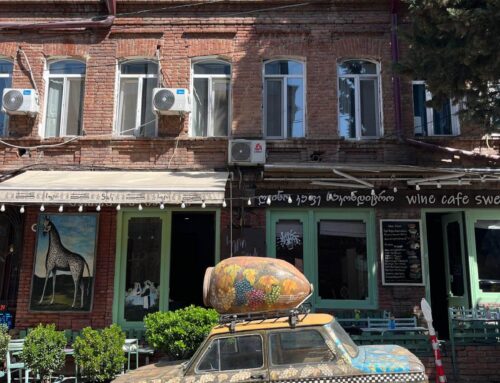Everything You Need to Know to Travel to India
Planning a trip to travel to India?
India is such a vast and diverse country. It currently holds the title for largest population at over 1.4 billion people! From the gorgeous mountains in the northern region to the large populated cities in the central region to the lush green forests and beaches in the south, India has it all. However many people are nervous to visit this amazing country. We took the plunge and visited just Southern India in December and I have to say, this was the best dip your toes into a country experience we could have ever had. Now that we’ve had a taste of what the country is really like, we can’t wait to come back and we’re excited to share all our experiences with you.
Regions of India
Like we mentioned, India is huge. With 6 major zones, you have to figure out what you want to do first before planning a trip.
- Looking to hike mountains? Go north to the Himalayas
- Looking for big cities and the Taj Mahal? Go to the Golden Triangle which is the cities of Delhi, Agra, and Jaipur
- Looking for a yoga retreat? While yoga originated in Northern India, you can find amazing yoga retreats throughout the country
- Looking for temples and history? Go to Tamil Nadu to see many UNESCO World Heritage sites
- Looking for beaches? Check out Goa for some amazing beaches
- Looking for ayurveda healing? Check out Kerala as the birthplace of ayurveda due to the wide variety of healing plants that grow here
We did a 3 week trip to southern India only, specifically Karnataka and Kerala. Our experience was vastly different from the experience a lot of our friends had when they went to northern India. From what we gathered, the north tends to be larger cities, more congested which leads to more pollution, and more chances to get sick. However the Taj Mahal is in the north so if that’s on your list, you’ll have to go north to see it. Southern India is lush and green, with both jungles and mountains and smaller towns. Most of our time, we never even saw other tourists. It was definitely less crowded with more blue skies and honestly perfect weather in December.
When To Go and Weather
When planning your trip, it all depends on what you want to do. In general, the seasons can be summed up below, but how each region experiences these is very different.
Winter: December – March (probably best time to travel)
Summer Pre Monsoon: April – June
Monsoon: June – September (try avoid this time)
Post Monsoon: October – December
Most of India experiences very hot temperatures. Northern India tends to cool down in the winter where a jacket and warmer clothes are needed. For example, Delhi has a low of 8C / 47F in the winter but 45C / 113F in the summer. If you plan to go to the mountains in the north like Jammu and Kashmir, just know that temperatures can get to an astonishing low of – 45C / -49F in winter! Topping the list as the rainiest city in the world is Mawsynram, located in the northeastern state of Meghalaya, India which receives an astonishing annual rainfall of 467 inches (1,186cm)! So do your research regarding the specific area and time you are visiting as this vast country experiences so many different types of weather and the season can change drastically as well.
Languages in India
The country has 22 official languages but there are over 700 different languages spoken. With so many different languages, it seems that Hindi is the main or default language of communication in the north. In the south, the default is English for those who don’t speak each other’s languages. In our experience in the south, people were quick to switch and help us in English. We even noticed that packaging in the grocery stores was written in English. We tried to learn a few phrases in the local language but as we moved from area to area, the phrases kept changing!
How to get a Visa
India has a couple types of visa but be warned, many countries including the USA are not eligible for a visa on arrival so make sure to check your passport country and requirements before flying. India’s government has a website which makes filling out all the details easier. You will need a bunch of information to fill out the application like: scanned passport page in pdf, digital photo in passport style (jpeg no more than 1MB), and a reference address in India. Also note they asked many detailed questions regarding our parents and any connection to foreign governments.
After filling out the paperwork, the website will lead you to pay online. The application will not be processed until you pay. They typically respond to your completed request with an acceptance or rejection for an e-visa within 2-3 days. The email response includes your visa number. We printed this acceptance page with the number for the immigration and that’s all we needed.
Types of visas: If you are only going for a short trip, a 30 day tourist e-visa will do. The application for the e-visa opens 30 days before your arrival date so set a reminder to fill it out before you go. If you think you will be back a few times, it might be better to get a longer visa like 1 or 5 years. These e-visas will open up 120 days before your arrival date.
Indian Currency
India is another country where cash is king. The Indian currency is called the Indian Rupee (INR). While many restaurants had Visa/Mastercard signs indicating they accepted credit cards, it seemed that most preferred cash. Some even said they would not accept credit cards even with the advertised signs. So be prepared to have cash on hand at all times. You can always use an ATM but just know that the fees will be higher. We found it best to bring our own currency and exchange it at a bank or currency exchange. The rates we got were better at the banks than the ATM.
Tipping is customary at restaurants with a 5-10% tip or just round up the bill. Also if you use a service like a guide or driver, expect to pay 250-500 INR per person per day.
Food in India
If you already like Indian food, this country is going to blow you away with the depth of flavor and intense spices and aromas. Everything was better than we expected. We tried our favorite dishes but then we were able to try so many dishes we’d never heard of and were so glad we did. Try local dishes which use ingredients from the area. We always asked what was best and usually went with that as the local dishes continued to exceed our expectations.
One thing that we noticed, on a lot of menus and signs there is a green or red dot. Many people in India are vegetarian so there are dedicated vegetarian restaurants which means all dishes are vegetarian (usually shortened to just veg). However, other restaurants use the dot on the menu to indicate if the dish has meat in it or not. The green dot for vegetarian and red dot for meat. This turned out to be a very helpful indication. On that note, we rarely if ever saw beef and pork listed on a menu. You can find it in some other ethnic restaurants but if you are eating Indian, that means most of the meat is chicken, lamb, or fish. And pro tip: most meat will be served bone in so chew carefully and slowly so you don’t get a bone shoved into the side of your mouth.
Also since one of us has to eat gluten free, southern Indian cuisine is oddly easy to eat GF. Southern Indian food uses a lot of rice, lentils, and chickpea (gram) flours to make crackers, breads, or other accouterments to the dish. I had to ask a lot of questions or google recipes a lot to see if they used wheat (maida or atta). But overall I was impressed with the amount of rice based things I could eat. Honestly, if you could win an award for creativity with rice, southern India has won it. From dosas to idiappam to puttu to idli, you will have so many choices of rice based treats to eat!
Overall, we were really impressed with the price of food. It was so reasonable to eat a meal for $3-5 total for two people. And like I said, it was delicious! The nicer the restaurant or hotel, the more expensive meals can be where we paid up to $25 for two people.
Southern India Pro Tip: one thing that confused us at first is that for some reason, many restaurants are called hotels. Not sure the origin of this tradition. However not all restaurants are called hotels, and hotels are called hotels so it keeps you on your toes.
How to Not Get Sick While Traveling in India
Luckily, we did not get sick while in India which seems like a first from most of the travelers we talked to. While researching for the trip and talking with fellow travelers, most people seemed to get sick in northern India. It is called Delhi Belly after all and Delhi is in the north. While you can still get sick in southern India (we have friends that did), Kerala boasts that it’s the cleanest state in India and we could tell. While we were vigilant, we didn’t take every precaution and were fine.
We read a lot before coming and it seems that most people get sick from the water. Do remember that water comes in contact with many things, not just water for drinking: think about the ice to cool drinks or food, water to wash dishes or fruits, showers, etc. Although it may seem severe, here is the recommended advice:
- Avoid the tap water at all costs. This means only drinking bottled water and even brushing teeth with bottled water. Try to keep your mouth closed in showers.
- Do NOT eat or drink fresh fruits or veggies unless it has a peel like a banana or an orange that you can peel yourself. This includes things like fresh fruit juices, smoothies, and salads.
- Avoid Ice – in drinks, in lassi (mango smoothie), or food that has been sitting on ice and not cooked afterwards.
- Street food is hit or miss. Basically, if there are a lot of people going there and you can see the food being freshly made (not sitting out all day) then you could be fine.
- For restaurants, stick to busy/popular places. Wipe the silverware before eating off them, only drink out of sealed bottles (not cups).
- Many recommend not eating meat while in India due to raw meat possibly sitting out but we did a combination of both veg and meat from reputable places and were fine.
Medicine to Bring While Traveling India
Many travelers recommend bringing your own medicine. We also encourage it as you’ll feel more confident and prepared for a trip to India, however we also found many pharmacies and herbal medicines available everywhere so if you forget to bring something, you can always find it locally. Additional medications to bring may include anti-diarrhea, charcoal pills, mosquito repellent, and sunscreen.
Bathrooms
While we were able to find many free public restrooms, I will warn you that most did not have paper in them. I recommend buying a few packs of the small tissues that fit in your backpack or purse for easy access. The only place that did have paper were the nicer hotels. Also note that at some of the tourist sites, a bathroom can cost you 5-10 INR ($0.06-0.12 USD) so keep some small bills with you just in case as well.
Tours vs DIY Trips in India
As you know, we mostly DIY our trips but there are certain countries like Egypt or Nepal where a tour guide comes in handy. India was another case in which we were glad we did. We know it’s possible to do on your own, but using Authentic India Tours was the best Christmas present we could have given ourselves. Their attention to detail on the planning process, their top notch communication, and the excellent service we received the whole time was well worth the cost. If you are nervous about going to India for any reason, we’d recommend Authentic India Tours to ease your mind and be able to really enjoy the experience.
That being said, we met many people doing it themselves. We talked to so many people who were doing homestays, taking trains, and navigating the country themselves. One common complaint is that the trains take a long time. Most trains don’t have air conditioning which can be intense depending on the time of year you go and the length of the ride. Sometimes you don’t know if you have a seat on the train until 2 hours before it leaves. With the country so spread out, it felt like a lot of time was dedicated to just traveling and not enjoying the place they were. Also when we mentioned some of the cool places we had been in the mountains, they remorsed that public transportation couldn’t have gotten them there so they felt they missed out.
The option of renting a car and driving in India came up a lot in conversations. Driving in India is more intense than I expected as traffic is everywhere and many times people create their own lanes or rules (maybe they don’t follow the rules). They follow the British side of the road driving as well so if you’re not used to that, I wouldn’t recommend driving yourself. Taxis are decently cheap and there is always the option to rent a driver with a car.
Cell Phone and Sim Cards while Traveling in India
We are big fans of E sims. Almost every country we go to, we buy an E sim in advance on Airlo. This makes landing in a new country so easy. Just connect to the airport’s free WIFI, install the E sim you bought, and you are connected and ready to go!
Outlets and Electricity
India uses 230V electricity with type C,D and M plug-ins. Our American plug-ins didn’t work so I’d recommend a universal travelers adapter. It has been so helpful as it has allowed us to use our devices in so many countries where our plugins don’t match.
Overall, we’d highly recommend a visit to India. We are so glad we came because it blew us away with the beauty of southern India, how friendly the people are and what a pleasant experience the whole thing was. Again, we cannot comment on northern India as we didn’t go but when we tell people about our experience, they always comment how different it is than their experiences in other parts of India. Southern India is a great place to start to experience the local life, get a taste of the delicious cuisine and enjoy your first trip to India!
Discover more from Penley Perspective
Subscribe to get the latest posts sent to your email.













